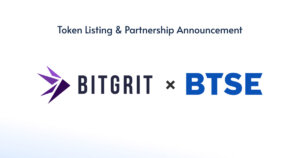 MoneyGram officially using XRP through Ripple’s xRapid for cross-border payments
MoneyGram officially using XRP through Ripple’s xRapid for cross-border payments MoneyGram officially using XRP through Ripple’s xRapid for cross-border payments

Cover art/illustration via CryptoSlate. Image includes combined content which may include AI-generated content.
MoneyGram revealed it is now commercially leveraging XRP through Ripple’s xRapid for cross-border transactions, according to the latest earnings call. The integration represents the largest real world use case for XRP.
During MoneyGram’s Q2 2019 earnings call, MoneyGram shared that the company has been using Ripple’s liquidity solution, xRapid, since late July. However, the company did not provide any further details on the number of transactions or overall volume conducted using xRapid.
“Ripple will become our key partner for cross-border settlement using digital assets, and we’ve already started executing trades,” stated MoneyGram in its written Q2 report.
Use-case for XRP
Traditional payment networks have intense capital requirements, especially when it comes to international currency transactions. Banks use a process called “nostro account funding,” where a bank holds foreign currency in another bank to facilitate international transactions and currency conversions.
Ripple is attempting to innovate in this area through its use of xRapid and XRP. The company claims that XRP provides “on-demand liquidity,” alleviating the need for large balances held in nostro accounts.
“Existing payment networks depend on intensive capital requirements in the form of nostro account funding, a cost that currently ties up trillions of dollars globally. [xRapid] makes accessing on-demand liquidity easy, lowering capital costs,” said Ripple in its onboarding documents.
MoneyGram affirms this position in its Q2 report, stating:
“[xRapid] Reduces operating costs and working capital needs to improve earnings and free cash flow.”
And, the amount of freed-up capital could prove significant for financial institutions like MoneyGram. In McKinsey’s 2016 report, outstanding balances held in transactional accounts exceeded $27 trillion in 2015.
“Through Ripple’s xRapid product, we will have the ability to instantly settle funds from U.S. dollars to destination currencies on a 24/7 basis, which has the potential to revolutionize our operations and dramatically streamline our global liquidity management,” said MoneyGram CEO Alex Holmes in June 2019.
However, XRP’s use by the money transfer business may not have a substantial impact on demand for the cryptocurrency. As a source of liquidity, payment services which use xRapid “don’t need to hold XRP for an extended period of time” because the transactions settle in seconds.
Ripple Labs acquires $30 million in equity
In June, Ripple committed to buying $30 million in MoneyGram equity (MGI) at $4.10 per share, amassing a ten percent stake in the company, at a steep premium. Details of the deal show that Ripple paid three times market value for shares in the company.
Not only that, Ripple agreed to invest up to an additional $20 million over the next two years at the same price of $4.10 per share. MGI was trading at $2.78 at market close this Friday.
Larry Angelilli, the chief financial officer at MoneyGram, said in June 2019:
“We are very pleased with the terms of the Ripple investment which supports the company with permanent capital and additional liquidity … MoneyGram [now has] the opportunity to improve operating efficiencies and increase earnings and free cash flow.”
Transitioning operations to xRapid
The majority of MoneyGram’s current settlement process is still probably being handled through the $5 trillion global foreign exchange market. This requires that MoneyGram acquire most fiat currencies in advance. However, integrating xRapid will allow the company to settle key currencies by “matching the timing of funding with its settlement requirements.”
Expressing confidence in his firm’s decision to partner with MoneyGram, Brad Garlinghouse, the CEO of Ripple, said in June:
“MoneyGram [will] greatly improve its operations and enable millions of people around the world to benefit from its improved efficiency. [Integrating xRapid with MoneyGram] is a huge milestone in helping to transform cross-border payments and I look forward to a long-term, very strategic partnership between our companies.”



 Farside Investors
Farside Investors 


























































































